Description
Featuring 16th Century 40 3/4″ diamond-section blade with 9″ central fuller inscribed “JVAN
MARTINEZ EN TOLEDO” on one side and “PRO ARIS ET FECIT” on the other; 2 ½”
rectangular ricasso stamped with the mark of either Juan Martinez the Elder (Hawtrey
Gyngell p.85) or Zabala Juan Martinez de Garata (Hawtrey-Gyngell p. 88). Later steel hilt
of flattened bars featuring straight quillons expanding toward the ends with button finials;
large obverse side ring extending from a triangular quillon block; pas d’ane with smaller
side ring below; reverse with two diagonal bars extending from the lower side ring and
joining the quillon block; knuckle bow with S-shaped finial stopping short of the pommel.
One-piece steel grip and faceted ovoid pommel with button. Hilt is damascened with gold
tendrils and border with additional border of silver dots. Grip has central gold and silver
figure of Hector in armor with sword and shield and the inscription “HEC/TOR/1556″ in gold
on the obverse and the figure of Achilles with the inscription “ACHI/LES” on the reverse.
Side rings decorated with gold and silver cavalry and infantry soldiers in battle around a
walled city, depicting the siege of Troy, and marked “RAPT/VS HELE” in gold on the upper
side ring and “TROOE/N 1556″ on the lower. The damascene is in the style of Diego
DeCaias, the 16th C swordsmith and damascener who worked for French King Francois I
and later English Kings Henry VIII and Edward IV.
A very similar sword, also depicting the figures of Hector and Achilles and the siege of Troy
in gold and silver damascene, was sold by Christies on 15 July, 1999 (price realized
$28,883) from the Rothschild Collection; formerly in the collections of Frederic Spitzer and
the Comte d’ Armaille’ and exhibited in the Kunsthistorisches Museum in Vienna. While
considered by many to be authentic and known to have been described in literature as
early as 1846, experts now consider the hilt to have been a later work and not that of
DeCaias himself. The price realized certainly suggests that the purchaser also did not
believe the hilt to be 16th C, or the price would undoubtedly have been six figures. It is
possibly the work of the Zuloagas Family of Spain in the 19th C. The Rothschild sword, like
the example offered here, also was fitted with an original 16th C blade, though that was the
work of Federico Piccinino of Milan.
In 1970 Claude Blair wrote an article about DeCaias’ work for the Metropolitan Museum
Journal. In that article is illustrated a very similar sword, though the figure of Achilles
appears on the obverse instead of Hector. Other minor differences prove that sword is not
the one offered here, but the style is the same. The example offered here was obtained in
Spain in 2002 and no previous provenance has been established. Since that time the
owner has had extensive communication about the sword with Claude Blair (Royal
Armouries, Tower of London, and Victoria and Albert Museum) and also with Stuart Phyrr
of the Metropolitan Museum of Art. While neither expressed an opinion as to its date of
manufacture, both considered it important enough to have devoted a considerable amount
of time to its evaluation. Copies of this correspondence included with the sword. Overall
length of this sword is 47 3/8″.

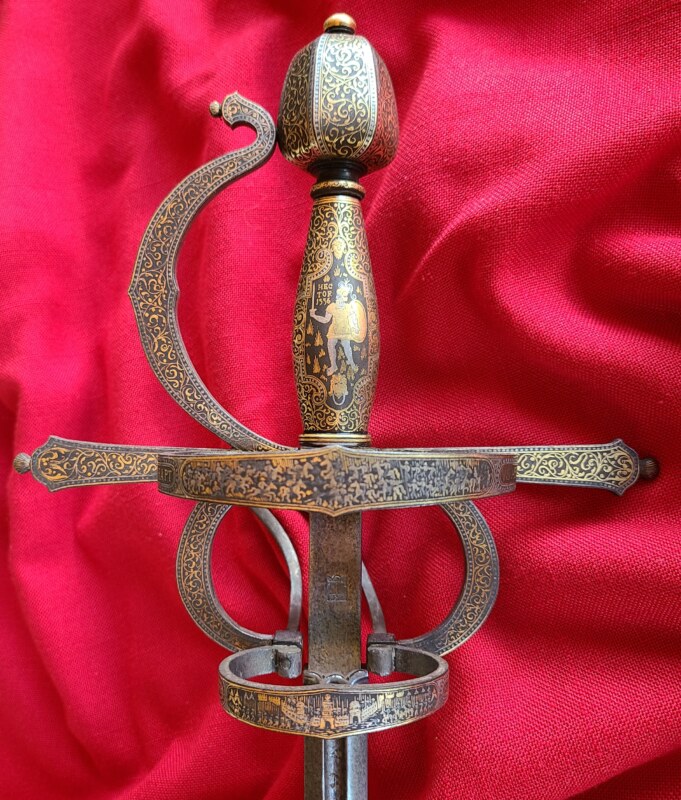
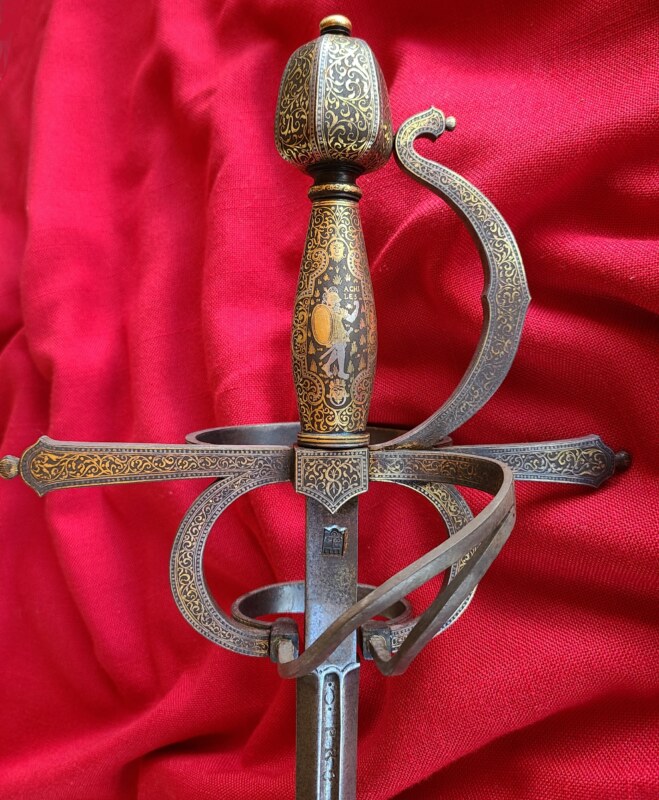
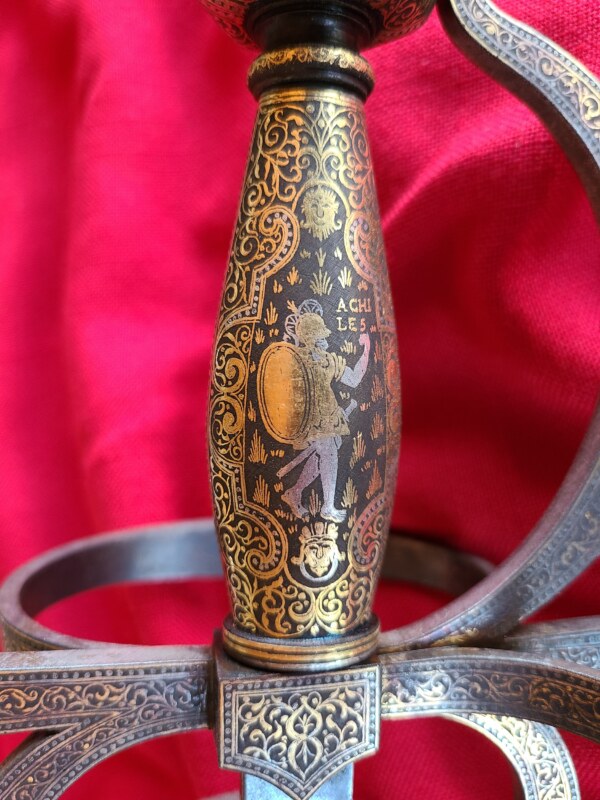
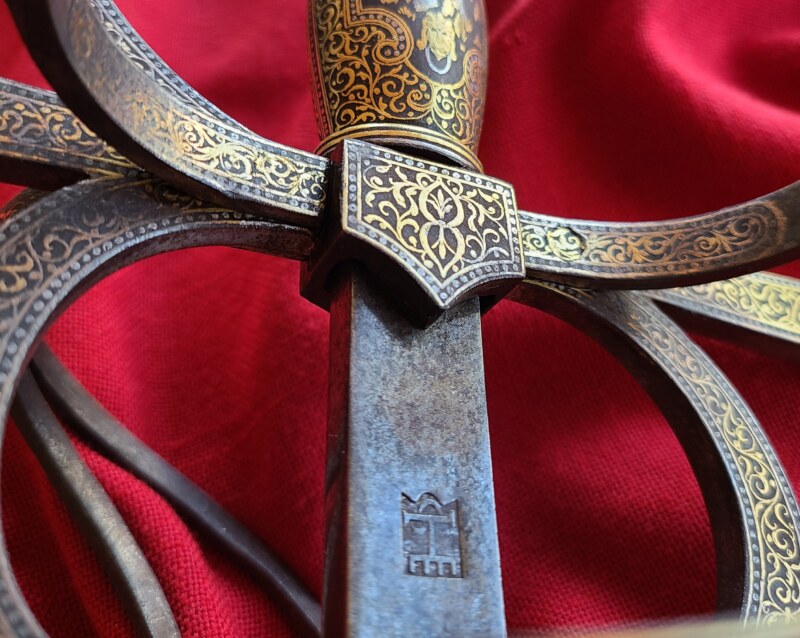
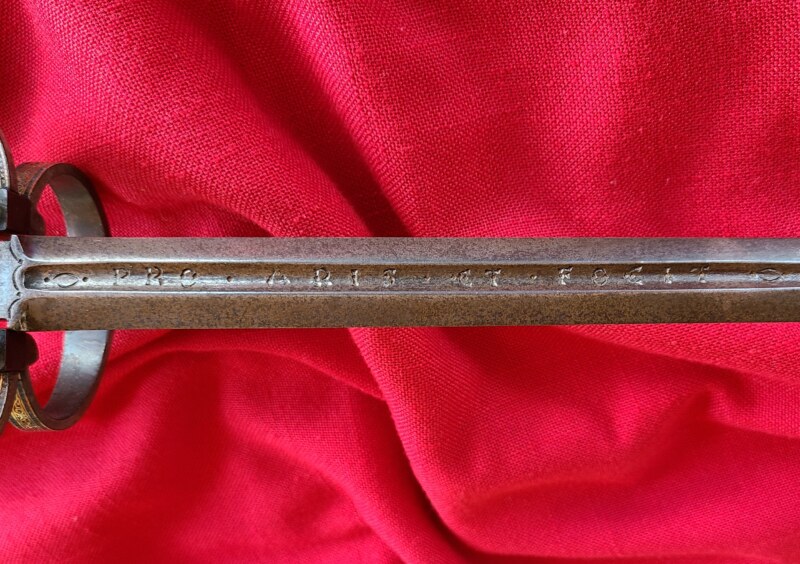
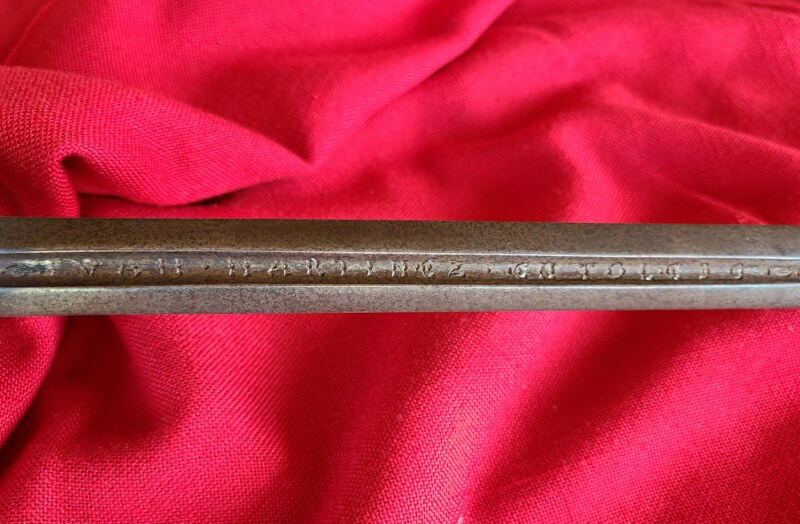
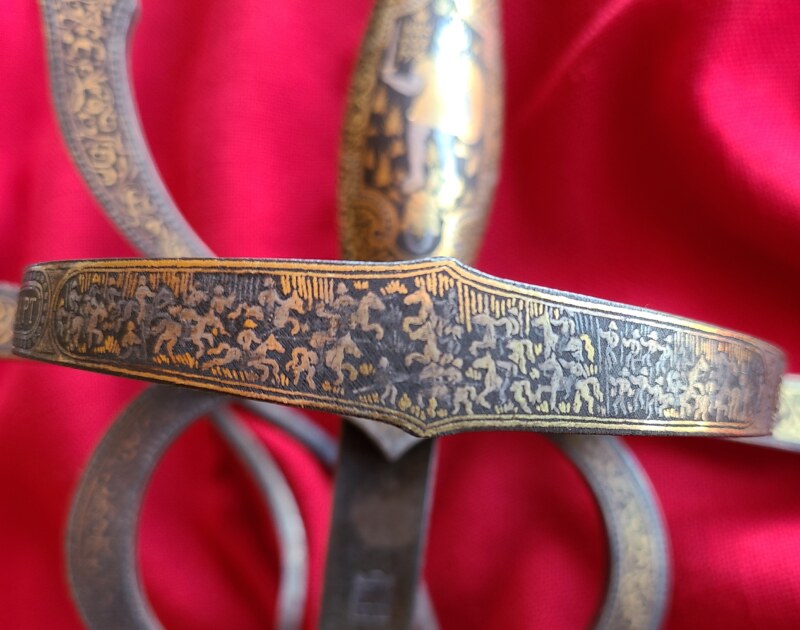
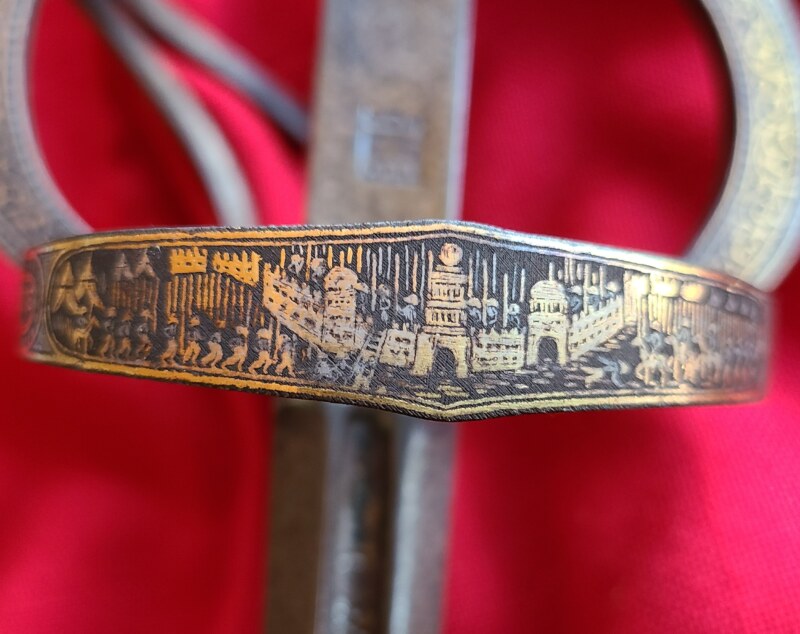
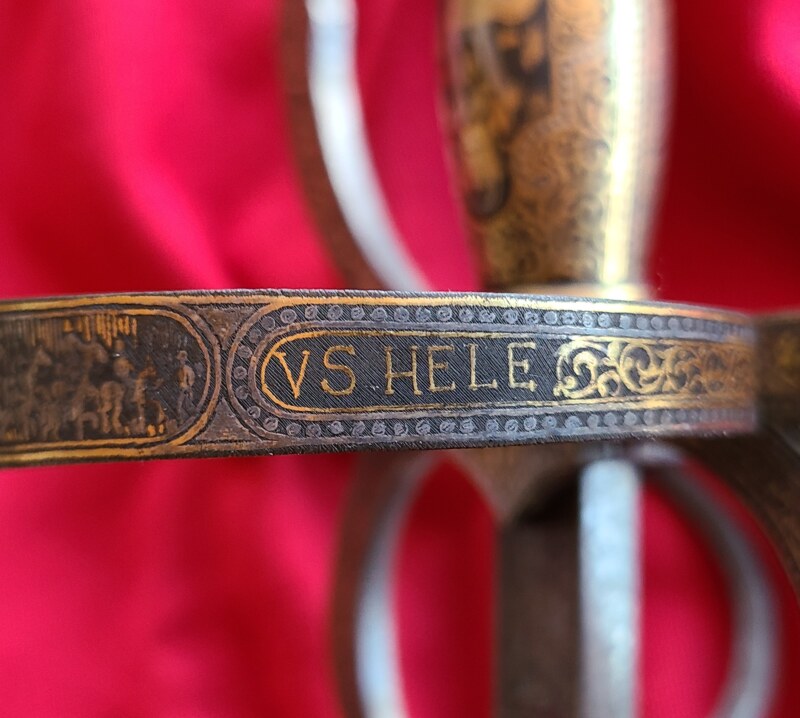
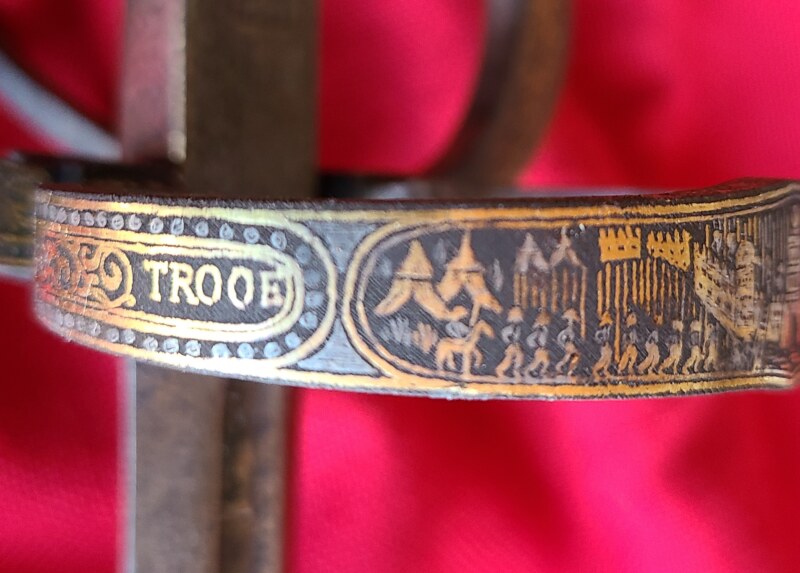
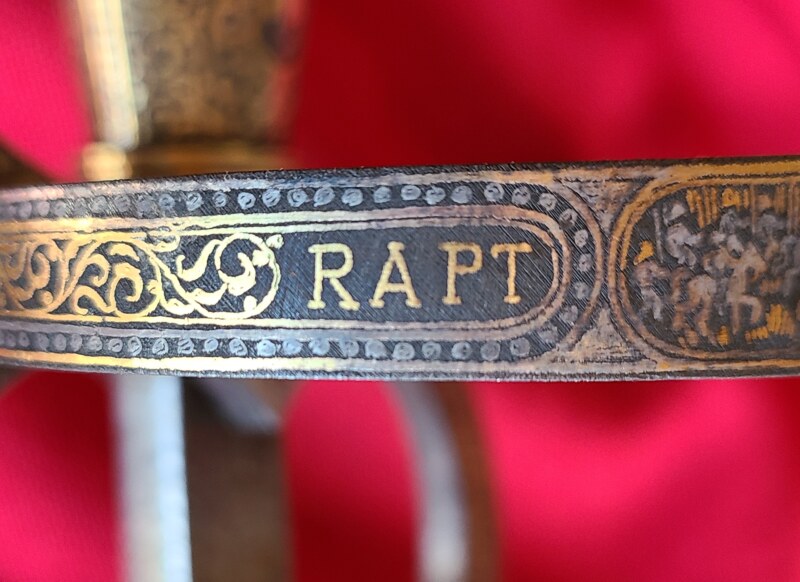
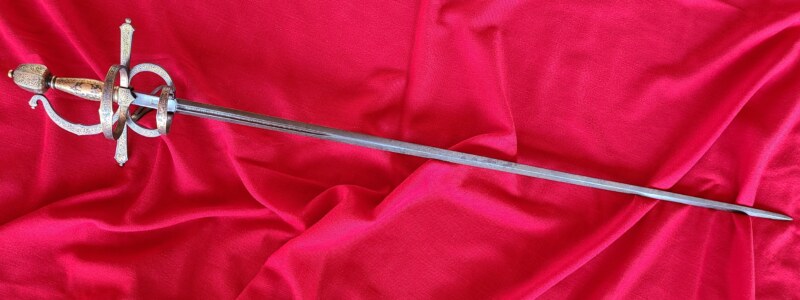
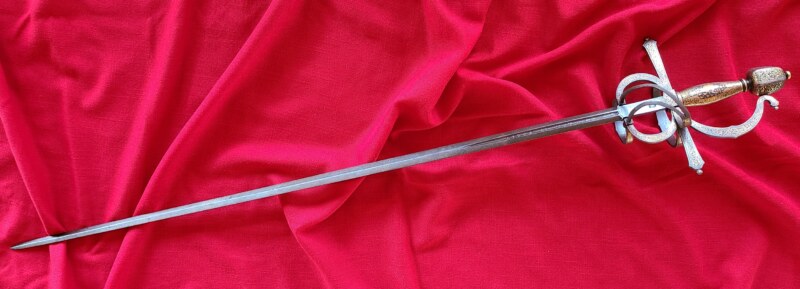
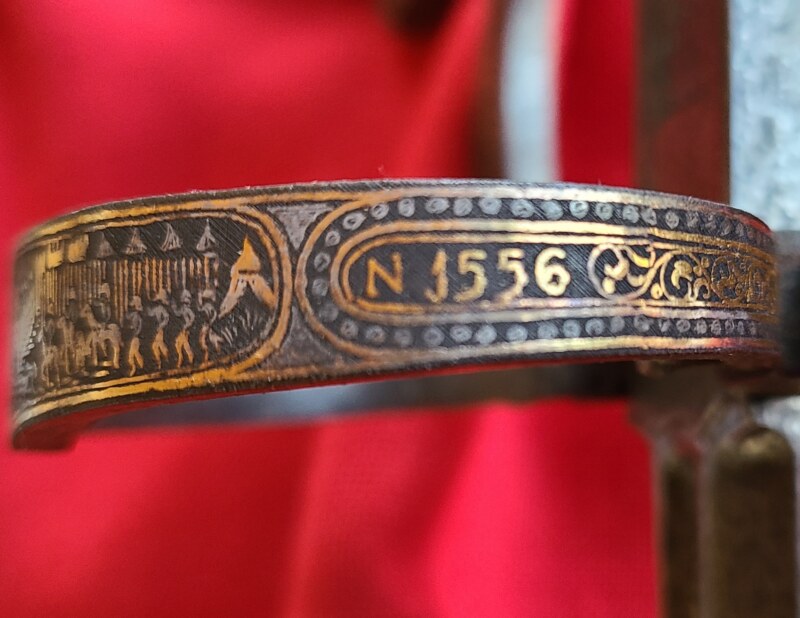
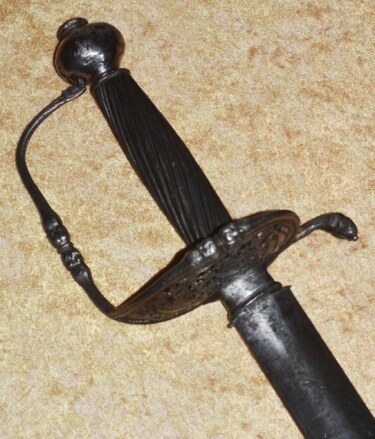 Late 17th C Officer’s Sword, French or German
Late 17th C Officer’s Sword, French or German 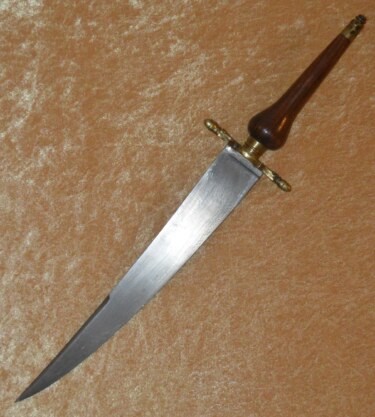 English Plug Bayonet, Last Quarter 17th C
English Plug Bayonet, Last Quarter 17th C  Museum Quality German Hand-and-a-half Sword, First Quarter 16th C
Museum Quality German Hand-and-a-half Sword, First Quarter 16th C
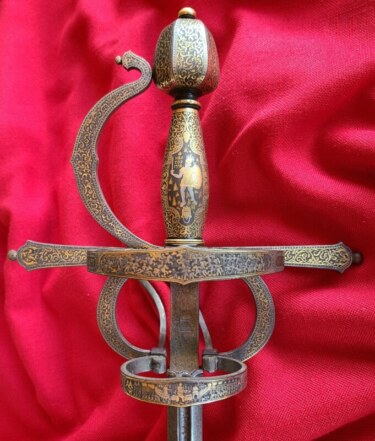 Gold and Silver Damascened Rapier in the Style of Diego DeCaias, Dated 1556
Gold and Silver Damascened Rapier in the Style of Diego DeCaias, Dated 1556